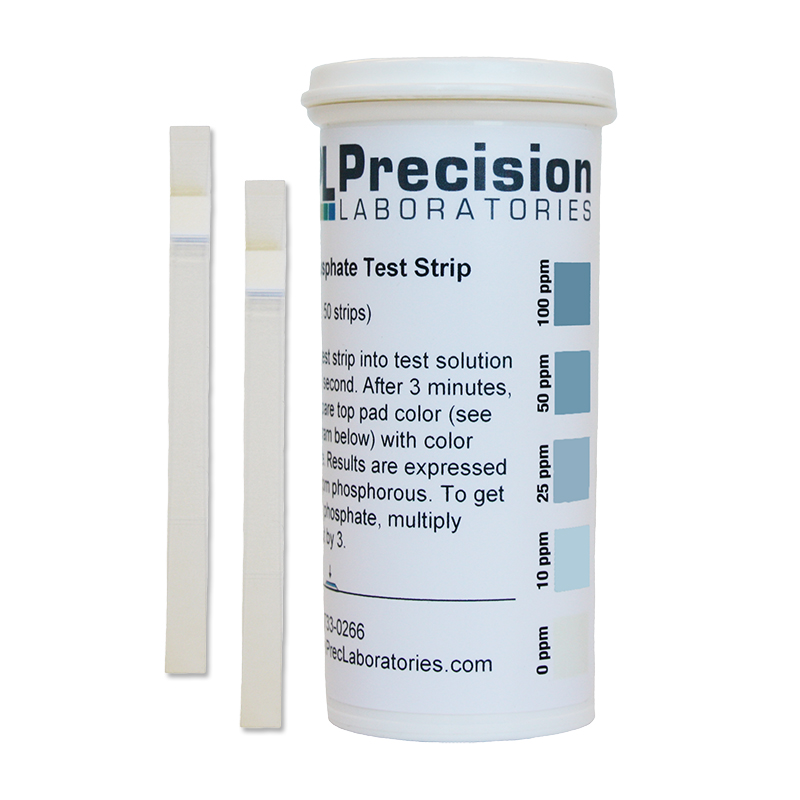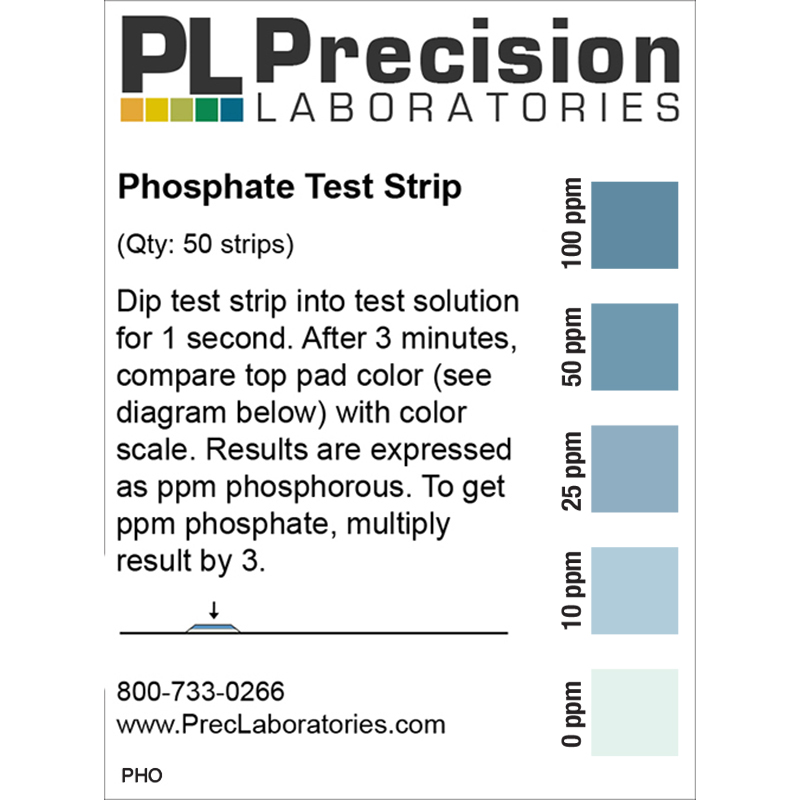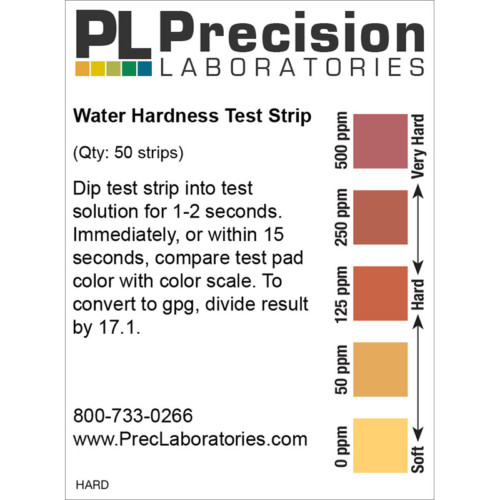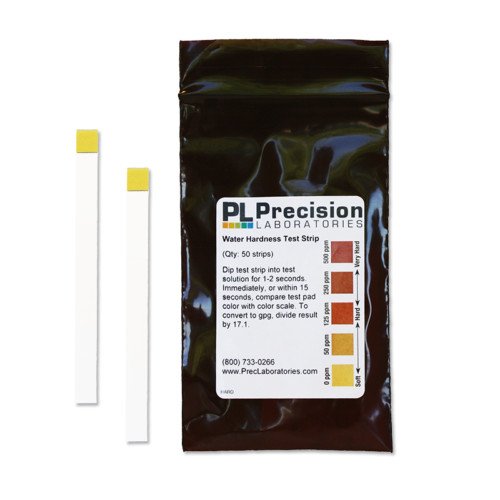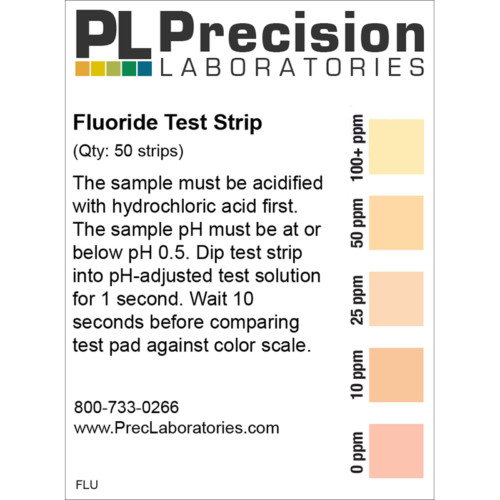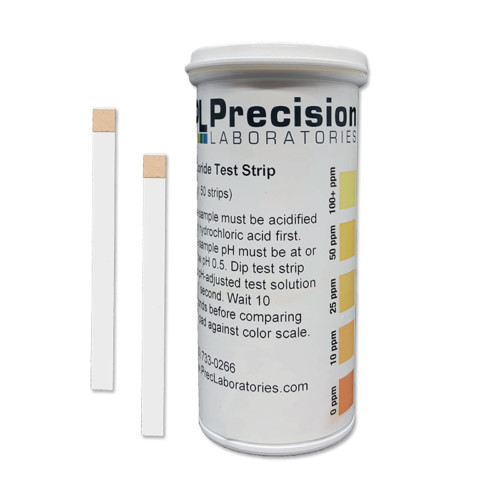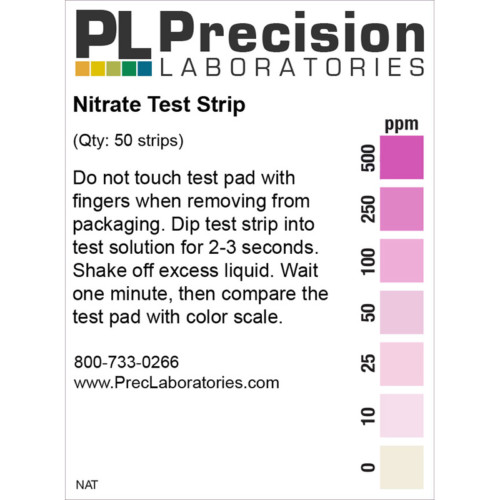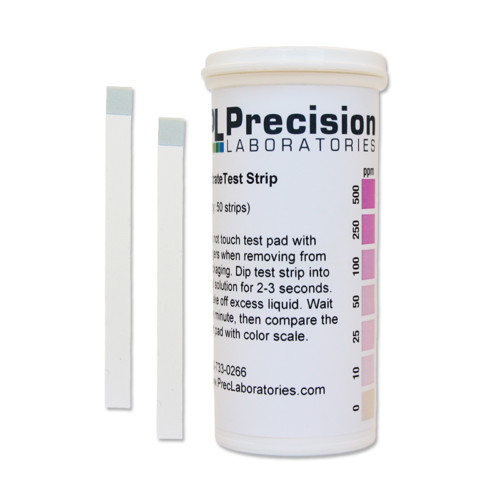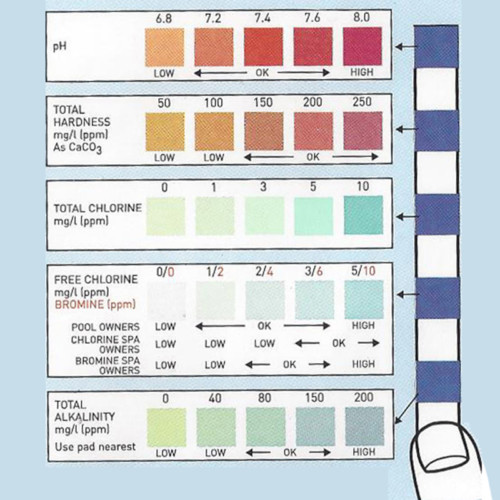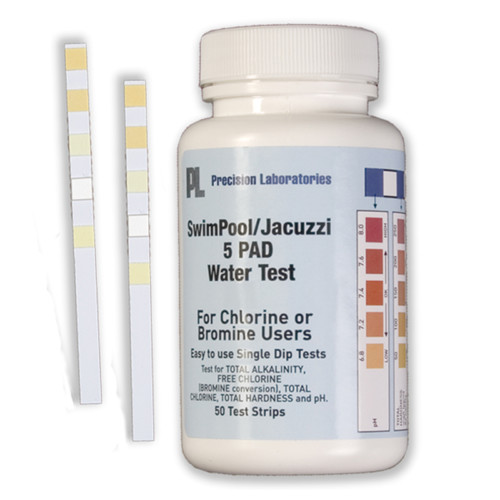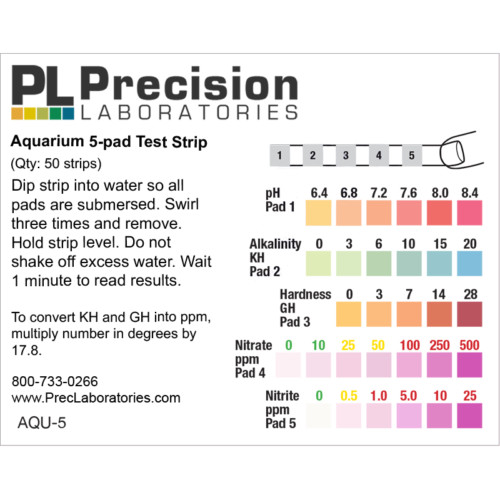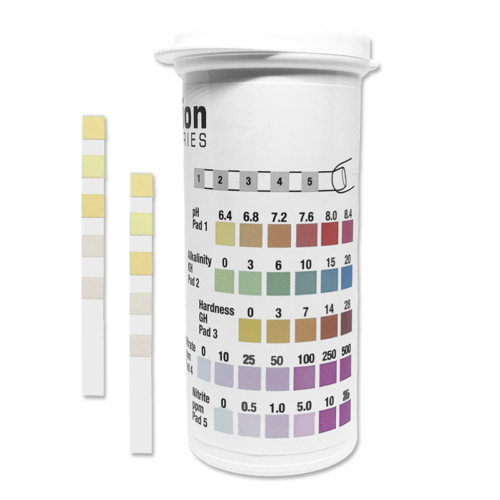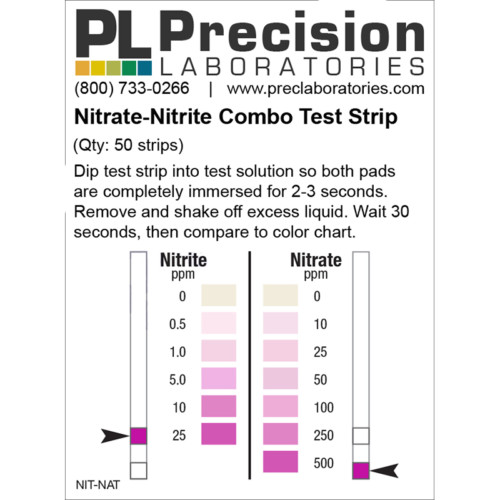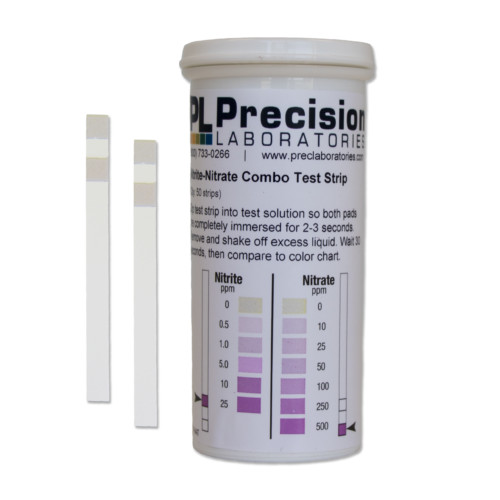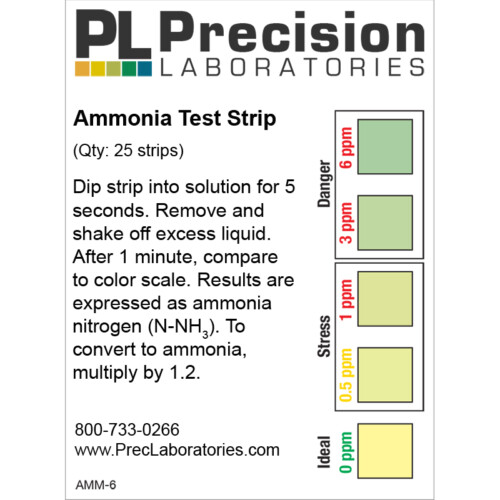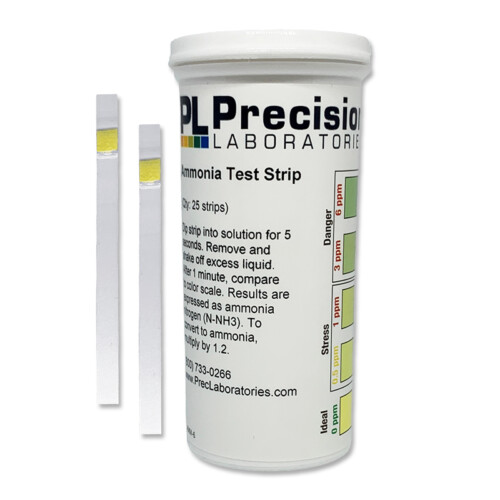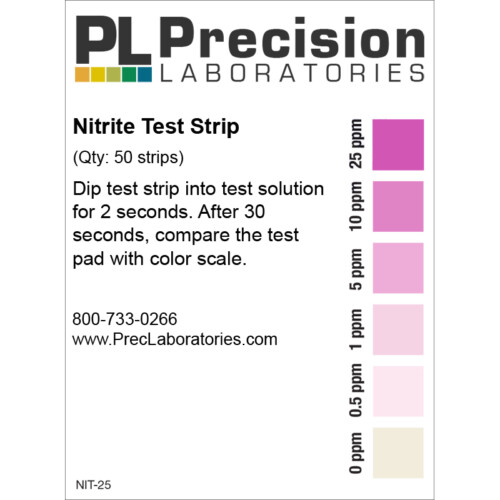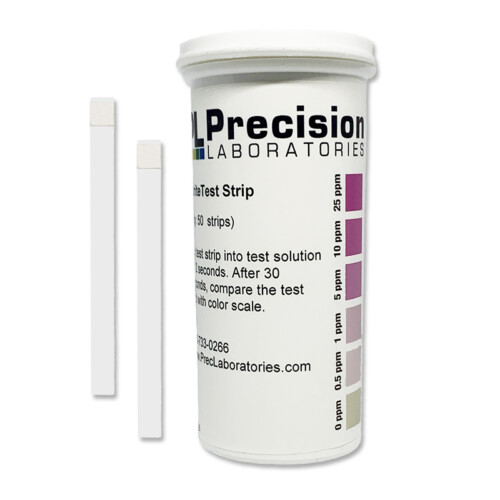The Phosphate test strip detects orthophosphate ions and expresses the result as ppm phosphorous. To express the result as phosphate, multiply the result by 3. This test strip has a unique construction for more accurate testing.
Phosphate Test Strip
Phosphate Test Strip
- Dip the test strip into the solution to be tested for 1 second.
- Remove and compare against the color chart after 3 minutes.

PHOS100; PHO; PHO-1V-50
Product Specs
| SKU: | PHO-1V-50 |
|---|---|
| Strip Quantity: | 50 strips |
| Vial Dimensions: | 1.125″ (D) x 3.375″ (H) [29mm (D) x 86mm (H)] |
| Strip Dimensions: | 2.75" (L) x .1875" (W) [70mm (L) x 5mm (W)] |
| Weight: | 0.07 lbs [33.4 g] (50-strip vial) |
| Other: | Stored in a flip-top vial with built-in desiccant liner. |
| Shelf-Life: | 2 Years |
| Label: | Customizable water-resistant label |
Product Documentation
Can the Phosphate test strips detect tripolyphosphates?
No. The Phosphate test strip uses the Molybdenum Blue method and detects only orthophosphates.
Tripolyphosphates must be converted to orthophosphate first to be detected. This can be accomplished by treating the sample with acid first, and then neutralizing the solution before using the test strip.
Remember that the Phosphate test strip gives ppm as Phosphate, not phosphate ion. The result should be corrected for any dilutions/additions and multiplied by 3 to arrive at the phosphate ion ppm.
Which way is up on the Phosphate test strip?
The pad for reading the results is the one at the bottom of the channel or well. When laid on a table with the “bump” facing up, it is the pad you can see. This is going to be the darker pad.
The other pad is flush with the “back” of the strip. When constructed, the first pad (the one to read) is laid in the channel and the second pad placed on top of the first pad. The two pads are then secured in place by taping the back of the card.
Are there any interferences with the Phosphate test strip?
There are some interferences to consider:
- Arsenate and silicates above 20 ppm will cause a false reaction. These will form a yellow color.
- Fluoride, chlorides, and nitrites above 50 ppm will depress the phosphate reaction on the strips.
- Heavy metals will depress the result.
- Large quantities of oxidizing compounds will also depress the result.
- Lastly, pH and temperature will affect the results. The pH of the sample should be in the range of 6-9. For temperature, the best results are obtained in the range of 18-30 C. Above or below this the reaction on the strip can be depressed.
Is the concentration scale of the Phosphate test strips in ppm or ppb?
The Phosphate test strip is measuring phosphate (as phosphorous) in ppm. We do not offer a strip that can read as low as ppb.


